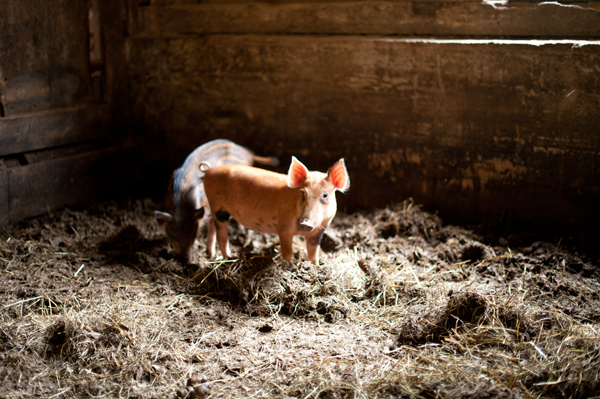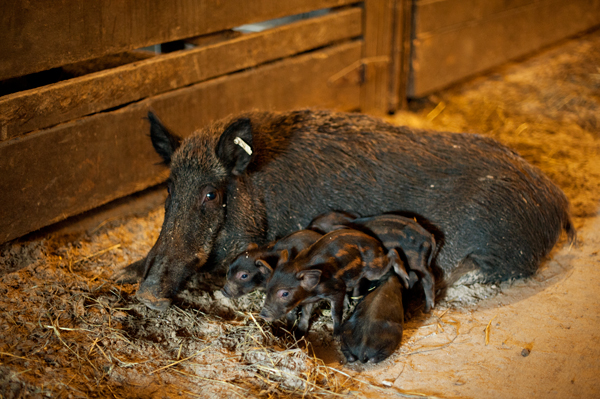
Mike Fogel is clearly a buffalo man.
His business, Buffalo Gal, is based at Money Creek Buffalo Ranch, his Houston, MN property 120 miles southeast of the Twin Cities. There a herd of 300 bison roam the rolling, bluff-lined acreage he has called home for the last 35 years. In the ranch’s gift shop, hundreds of bison statutes line the rafters, a Montana license plate that hangs on the wall reads MR BISON, and leather-scented lotion derived from bison fat sits among the sale display.
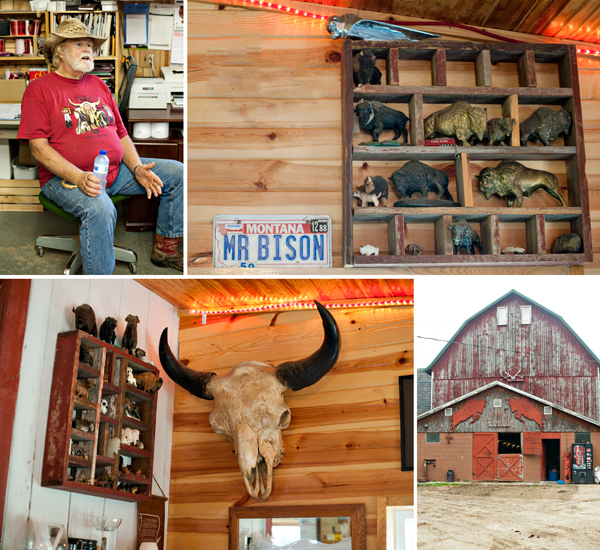
In an adjacent barn, mounted on the wall, is an heirloom that provides much of the explanation for Fogel’s fixation: the skull of the 19-year-old buffalo named Cody who, quite literally, brought him back from the brink of losing his home and his livelihood nearly two decades earlier.
The bison helped save the ranch through his $1,000-a-day work on the film Dances With Wolves and later starred in commercials and as the stand-in for the launch of the US mint’s buffalo nickel — work that took he and Fogel around the country together.
As the 63-year-old Fogel talks about Cody now, four years after he passed of kidney failure, it’s clear a strong bond was formed.
“Cody was like a lightning rod in my life,” Fogel said as he recalled his longtime friend during a recent trip to the ranch. “He changed everything.”
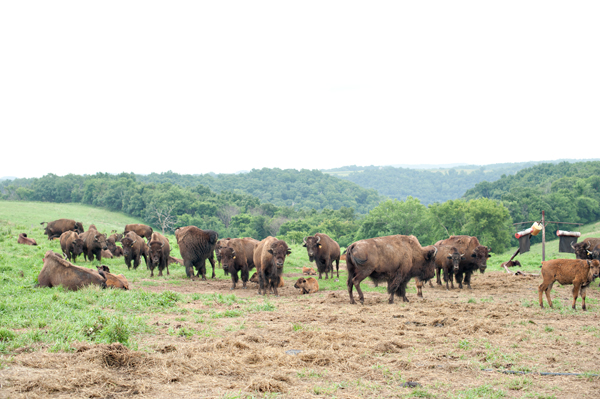
But if it was a buffalo that served as Fogel’s salvation during his early life, there is another animal that may prove equally vital in his later years. It’s not Cody II, a trained buffalo that now stands in for the original, but wild boar.
Today, Fogel and his partner of ten years Valerie Shannon run one of just two farms in the state that retain the right to raise the long-snouted swine. They are the only ones to offer its meat to restaurants and the public.
The other boar-owning farmer is Randy Tomberlin, who raises them for hunts on his Fort Ripley game farm and, like Fogel, is allowed to raise them because his operation predates a 1993 Minnesota law prohibiting the practice.
The law, passed amid concerns that the boars could escape, become feral, and wreak havoc on surrounding wildlife and domestic swine, still bothers both of the farmers, who together rallied against the legislation in St. Paul and describe it as the result of state bureaucrats run amuck.

Even now, they maintain boars can be raised safely in the right environment, and that it is only misguided fear and a strong pork lobby, which sees any alternative to the “other white meat” as a threat to their bottom line, that prevents others from getting into the game.
As the only game in town, though, Fogel is doing quite well for himself.
Along with other rare breeds of heritage pigs raised and bred with the boars on the ranch, the swine at Buffalo Gal now account for a quarter of the businesses sales. It is welcome cushion in a buffalo market that has changed dramatically since Fogel bought his first two buffaloes in 1976.
Near extinction a century ago, there are now more than 400,000 buffalo raised for meat in the United States and Canada. Ted Turner, the media magnate, now owns the largest private herd in the world — some 55,000 head at last count.
“In a small industry like ours, a big guy like that has a huge impact,” says Fogel, who hides his faintly red hair underneath a cowboy hat and sports a trim white beard.
The wild boar kept at Fogel’s ranch look every bit the part: with coarse black hair, high backs, and inch-long tusks that protrude skyward, their appearance is anything like the potbellied variety most Americans are used to seeing now. They also retain some of their instinctively wild traits — protective of their young and vicious carnivores when any of their pen mates show signs of weakness.
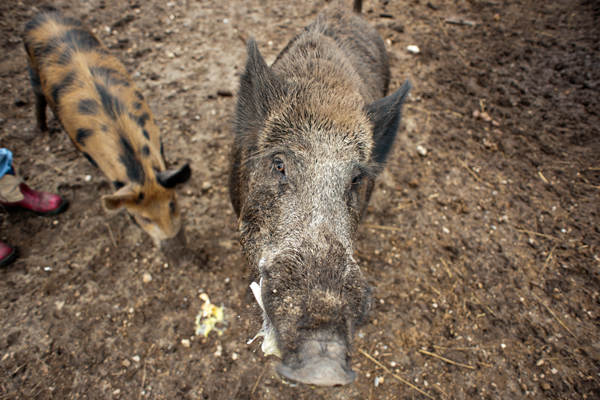
In flavor, they are also very different. Proponents say boar meat is leaner, higher in protein, and has a sweeter flavor that sets it far above any pork product purchased in the grocery store. It is only shunned by large-scale producers, Fogel says, because it takes longer to get to slaughter and would not do well in confinement.
“The domestic pig, they’ve breed the flavor right out of them,” Fogel said. “If you go to Wal-Mart and buy pork or turkey, you can’t even tell the difference because there is no flavor.”
Fogel sells the boar online as bacon, roasts, ribs, chops, and breakfast patties, and ships the product in sealed packages filled with dry ice. There is a long list of states to which they have been delivered and a list of 27,000 regular customers, Fogel says.
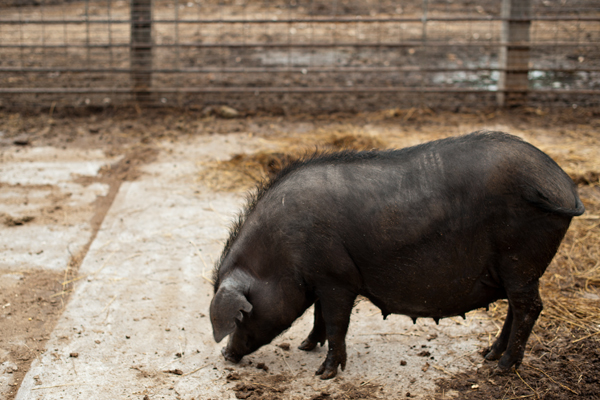
The meat has also won fans among a handful of restaurateurs in the region, including al Vento, Senor Wong’s, and the Strip Club.
Lenny Russo, the owner of Heartland Restaurant and Farm to Market in St. Paul, purchases whole boars from the farm, using them in a snout-to-tail fashion that yields head cheese, pickled tongue, and menu items such as braised boar and loins. (We talked to Russo about pork in an earlier story.)
“One man’s pest is another man’s meal,” said Russo, who has worked with the farm for the last two years and occasionally visits to see the operation first-hand.
Russo is such a devotee of the Fogel’s operation that he is working with them now on a breed all his own. The breed would be a mix of Swabian Hall — itself a rare hybrid of the Chinese Meishan and wild boar — and Ossabaw, a type of pig that was left on an island off the coast of Georgia by the Spanish.
Fogel owns what he believes to be the state’s only Meishan, and also describes the Ossabaw as exceedingly rare in the region.
The goal behind the new breed, Russo said, is to find the perfect ratio of fat to bone to meat. He’s not sure what to expect, he said, but is willing to try it anyways.
“It might take years of trial and error before we come up with the right genetics, but that’s how we work with all of our farmers,” he said. “We’re not afraid to experiment.”
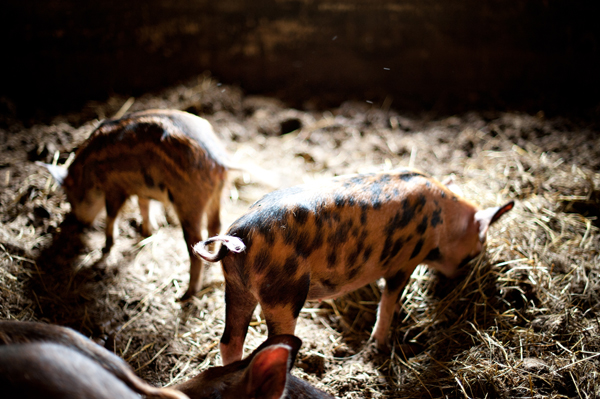
For his part, Fogel says having such feedback is critical to continuing his successful operation. Because even if he is going it alone, he said, his goal is to put out the best product he can.
“I need to know what’s working and what’s not if I’m going to raise good pigs,” he said. “And that’s what I intend to do.”
